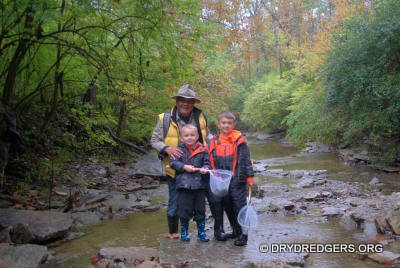
Take a look at this happy family.
They came with minnow nets but found only fossils.
Check out the heavily ladened net!
Photos by Bill Heimbrock

Take a look at this happy family.
They came
with minnow nets but found only fossils.
Check out the heavily ladened net!
This year, the October field trip was to a creek in Keener Park, Westchester, Ohio. Unlike many creeks, this creek yields Late Ordovician marine invertebrate fossils that are not worn down from heavy water currents. The fossils are almost as good as those found on road cuts. We have visited this creek many times in the past. Our last visit was in March 2013.
The forecast was for light rain, which is about what we had, but the trees kept us from feeling most of it. There was no threat of flash flooding. A flash flood warning would have stopped this field trip. This creek drains quickly and the morning we visited only showed pooling of water with no flow. Just the same, some of our favorite trilobite spots were under water.
We came prepared with boots for shallow wading.
Fossils Found That Day
Nautiloid Cephalopods
This site is most well known for the
straight-shelled
nautiloid cephalopods. Some are worn by the waters of the creek, like the one in
the next picture.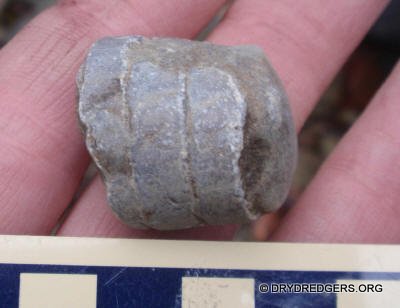
Some of the nautiloid fossils we found were preserved in
calcite rather than as silt casts or internal molds. In this next specimen, the
outside looks fairly indescript. But if you look at the end of the specimen, you
see a nice brown calcite preserving the interior of a chamber along with a dot
that was the siphuncle or tube that ran down the center of the nautiloid shell.
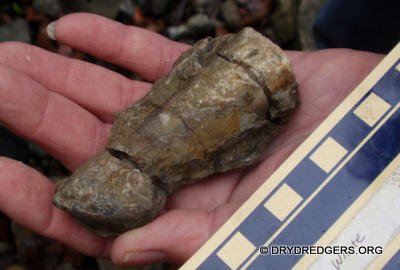
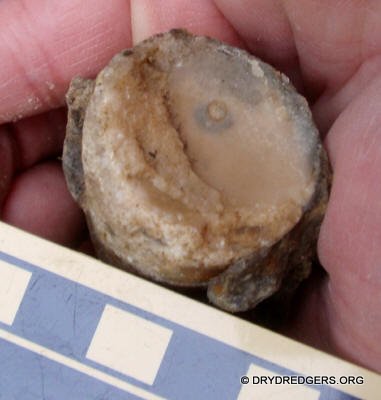
Here are a couple more specimens that show the siphuncle
running down the center of the nautiloid shell.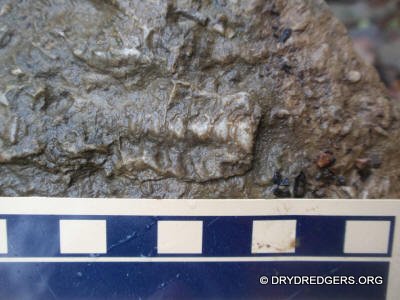
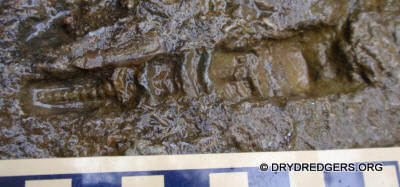
Here are a few more photos of nautiloid cephalopods we found
in various states of preservation.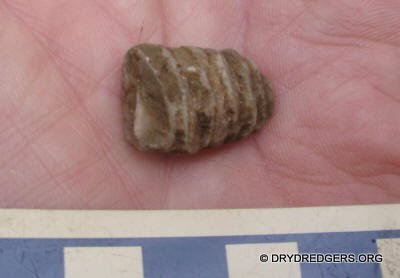
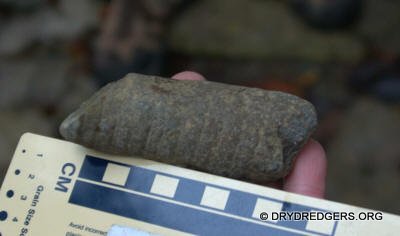
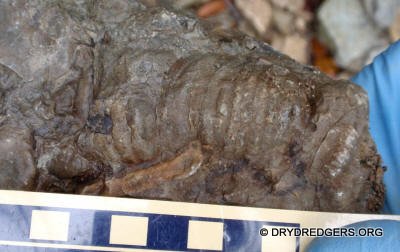
Trilobites
Despite the reputation of this creek as producing
numerous whole trilobites, none were found that day. They are weathering out of
the blue-gray shale layers in the walls of the creek. You can see the fragments
of Isotelus trilobites in one specific layer in this next photo.
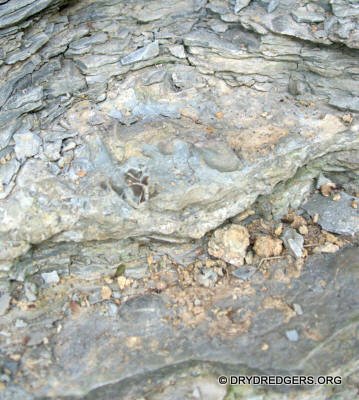
Pelecypods (clams)
Clam fossils of Late Ordovician age were abundant at this
site, particularly on the surface of slabs of rock. This first one shows the
distinct surface features of Ambonychia sp..
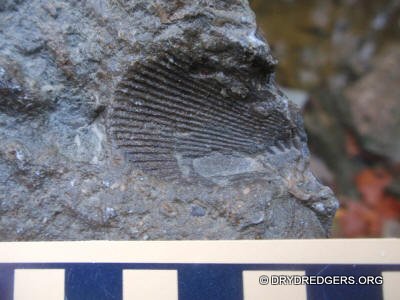
Long, skinny clams, which were probably Cymatonata
sp. were the most common of the pelecypods on slabs. (next 3 pics)
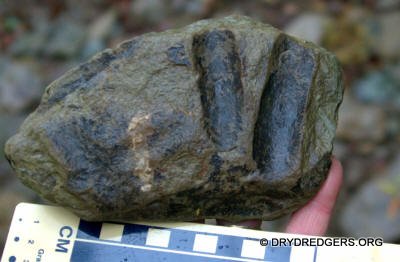
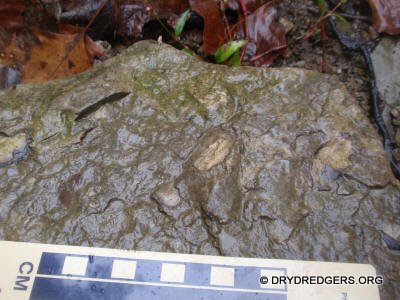
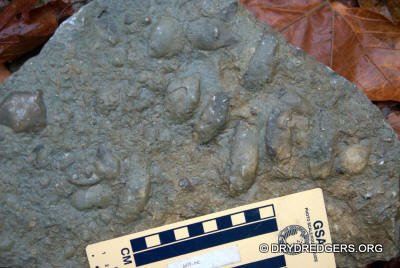
Gastropods (snails)
We saw a few snail layers on rocks. The first photo is a
Cyclonema internal mold on a slab. The second photo is "gutter cast" with snails
resting in the gutter when it was filled with silt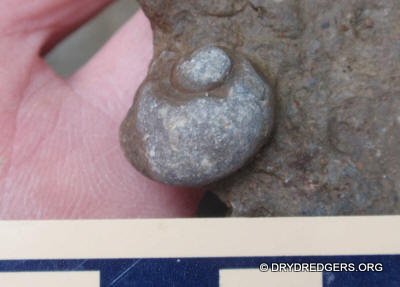
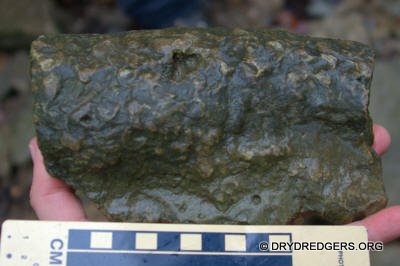
Brachiopods
Pavements of Rafinesquina of various species were seen on rock
surfaces. The one pictured below is distinct for its unique profile and is
abundant in the Corryville Formation. It's
Rafinesquina nasuta.
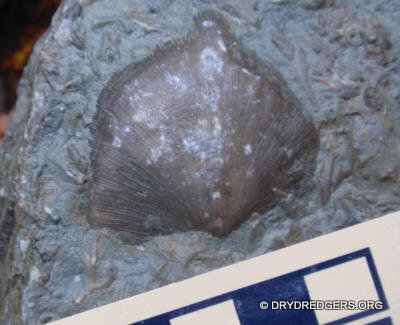
Here's another photo of a Rafinesquina pavement.
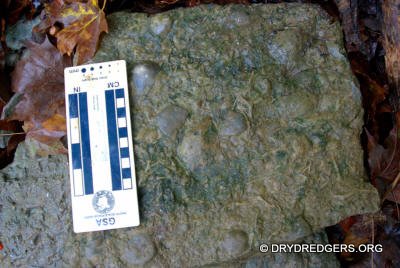
Another common brachiopod we found was
Vinlandostriphia ponderosa.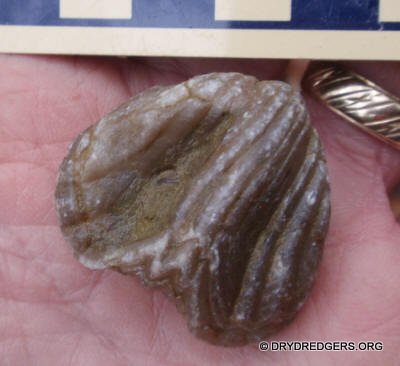
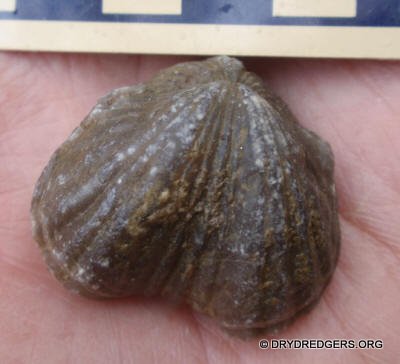
Some of the fragments of
Vinlandostriphia ponderosa we
found with smooth external shell features that were not worn by the creek water
but rather from 440 million years ago when they were in a shallow sea.
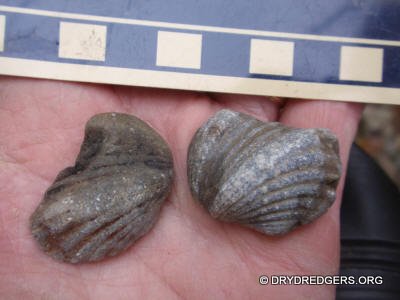
Other fragments of Vinlandostrophia ponderosa
showed internal features such as a deep muscle scar.
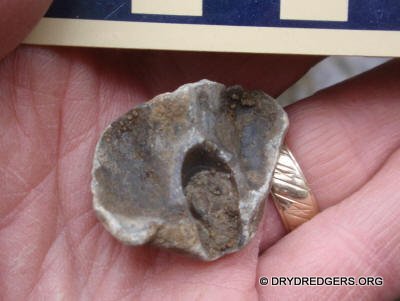
This Vinlandostrophia ponderosa is
broken to reveal the calcite crystals inside.
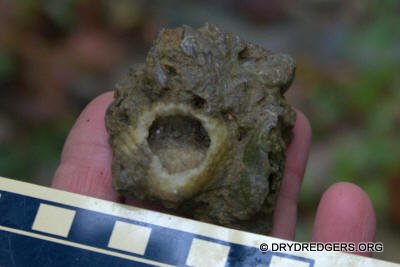
Bryozoans
Many of the larger slabs were covered with ramose (branching)
bryozoans. (next 3 pics)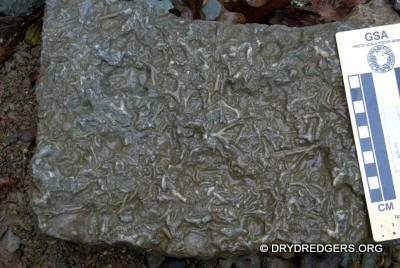
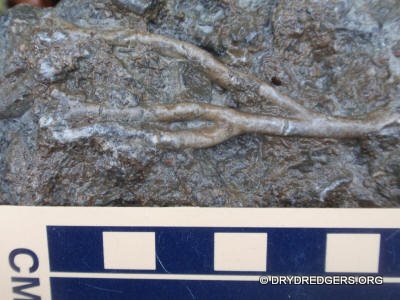
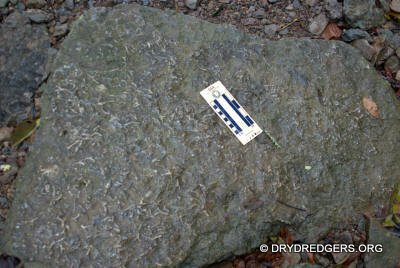
The site is also famous for larger colonies of bryozoans that
formed mats and leafy structures on the Late Ordovician Sea floor. The examples
below are called trepostomate bryozans. (next 3 pics)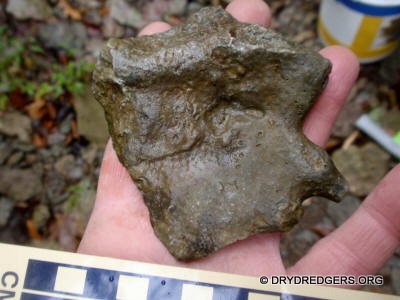
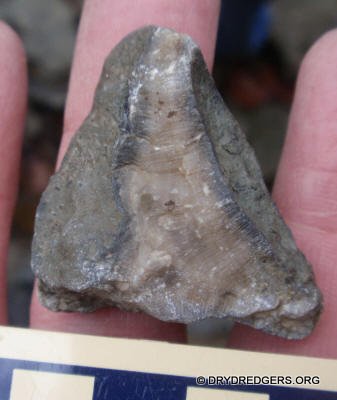

Crinoids
Quite frankly, we didn't find a lot of crinoids. Here's one
articulated stem.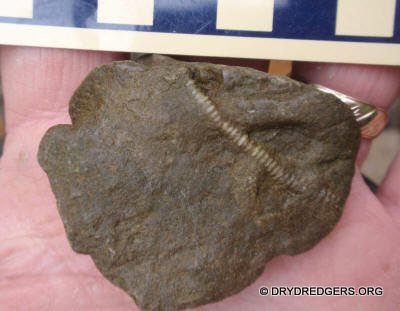
And here is a very nice and artistic collection of crinoid
stems on a rock surface. They seem to have star patterns, which help identify
them as
Cincinnaticrinus varibrachialus.

Ichnofossils (trace fossils)
There was plenty of shale on this site and so there was also
plenty of trace fossils. Here is an example of the branching trace fossil called
Chrondrites sp. You can see it in
the bottom of this picture.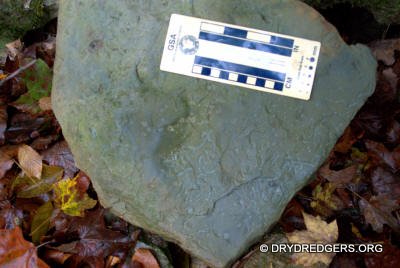
That's it. Hope you enjoyed it.
See photos of previous field trips to this creek.
March 2013
September 2010
July
2009
Now let's see our March 2019 field trip to Horn Coral Heaven, Ohio
Back to the Field Trip Index Page
Return to Dry Dredgers Home Page
The Dry Dredgers and individual contributors reserve the rights
to all information, images, and content presented here. Permission to reproduce
in any fashion, must be requested in writing to
admin@drydredgers.org.
www.drydredgers.org
is designed and maintained by Bill Heimbrock.